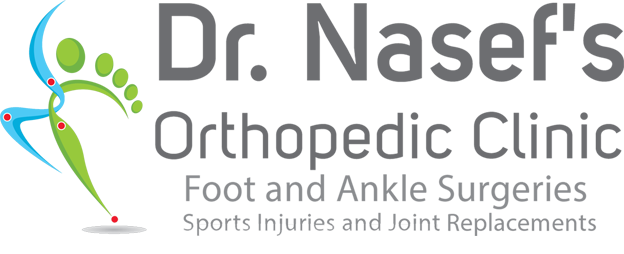DEFINITION Metatarsalgia is a general term used to describe a painful foot condition in the metatarsal region of the foot. This is a common foot disorder that can affect the bones and joints at the metatarsal heads. Metatarsalgia is often located under the 2nd, 3rd, and 4th metatarsal heads, or more isolated at the first metatarsal head (near the big toe). CAUSE With this common foot condition, one or more of the metatarsal heads become painful and/or inflamed, usually due to excessive pressure
DEFINITION A mallet toe occurs when the joint at the end of the toe cannot straighten. Excessive rubbing of the mallet toe against the top of the shoe can lead to pain and the development of a corn. The tip of the toe is often turned down against the shoe causing pressure and discomfort. CAUSE Arthritis can also lead to many forefoot deformities including mallet toes. Mallet toes can cause extreme discomfort, and can be aggravated if restrictive or improperly fitting footwear is
DEFINITION This is one of the most common conditions seen by the foot and ankle clinic. The heel bone is the largest bone in the foot and it absorbs most of the shock and pressure. A heel spur is an abnormal growth of the undersurface of this bone. The plantar fascia is a fibrous tissue band located along the sole of the foot and runs from the heel to the forefoot. Calcium deposits on this fascia, causing a bony protrusion, or
DEFINITION Heel pain is a very common condition in which weight bearing on the heel causes extreme discomfort. CAUSE There are two different categories of heel pain. The first is caused by over-use and repetitive stress which refers to pain resulting from too much impact on a specific area of the foot. This condition, often referred to as “heel pain syndrome,” can be caused by shoes with heels that are too low, a thinned-out fat pad in the heel area, or from a
DEFINITION A hammer toe is a toe that is bent at the middle joint in the toe leading to severe pressure and pain. Ligaments and tendons that have tightened cause the toe’s joints to curl downwards. Hammer toes may occur in any toe except the big toe. There is often discomfort at the top part of the toe due to rubbing against the shoe. Hammer toes are classified based on the mobility of the toe joints. There are two types –
DEFINITION Gout is a type of arthritis that causes intense pain, swelling, and stiffness in a joint; classically, it affects the big toe. Gout is a recurring condition. Gout is the most common form of inflammatory arthritis in men. The condition is characterized by sudden and severe pains, redness, and tenderness in the joints, most classically in the base of the big toe. These symptoms occur when uric acid, a normal metabolism byproduct, is deposited in the form of needle-like crystals in tissues
DEFINITION Diabetes is a serious disease that develops from lack of insulin production in the body or due to the inability of the body’s insulin to perform its normal everyday functions. Insulin is a substance produced by the pancreas gland that helps process the food we eat and turn it into energy. Diabetes is classified into 2 different types: Type 1 and Type 2. Type 1 is usually associated with juvenile diabetes and is often linked to heredity. Type 2, commonly
DEFINITION A claw toe is a toe that is contracted at the PIP and DIP joints (middle and end joints in the toe), and can lead to severe pressure and pain. Ligaments and tendons that have tightened cause the toe’s joints to curl downwards. Claw toes may occur in any toe, except the big toe. There is often discomfort at the top part of the toe that is rubbing against the shoe and at the end of the toe that is
DEFINITION Charcot-Marie-Tooth, or CMT, is inherited peripheral neuropathy and is found worldwide among all races and ethnic groups. Discovered in 1886, CMT affects an estimated 2.6 million people. CMT usually isn’t life-threatening and almost never affects brain function. It is not contagious, but it is hereditary and can be passed down from one generation to the next. CMT patients slowly lose normal use of their extremities as nerves degenerate and muscles weaken because the affected nerves no longer stimulate the muscles. Many patients
DEFINITION Bunions is another term for Hallux Valgus, one of the most common forefoot problems. Basically, it is a bulging bump on the inside of the foot around the big toe joint. This bump is actually a bone protruding towards the inside of the foot. With the continuous movement of the big toe towards the smaller toes, it is common to find the big toe resting under or over the second toe. This leads to overlapping toes. Symptoms of bunions are inflammation,


